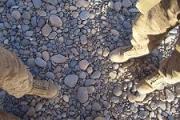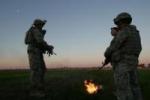"In advisory and counterinsurgency efforts, Thomas Carlyle’s warning that “nothing is more terrible than activity without insight” is particularly appropriate. As a former MILGROUP commander wrote, “the problem is, and has always been, to get the analysis right before prescribing cures.”8 Analysis requires situational understanding, not awareness. Even in peacetime, under normal conditions, situational understanding can prove fleeting. In wartime, for an advisor in a foreign country, it is almost impossible. At a minimum, an advisor needs to understand the local language, the local culture and values, the local military institutional ethos and how it works, his counterpart as a person in that foreign culture and constrained by that military institution, the local capabilities and limitations, and the specific local situation to comprehend what is going on around him and to preclude misunderstandings. Then, it may be possible to offer advice suitable to the situation; acceptable both to his counterpart and to his US superiors; and feasible given time, resources, and the capabilities and limi¬tations of host nation forces."
This installment of the JRTC BiWeekly History Lessons deals with a topic that does not pop up on the screen when the subject of military history is "googled" on the web. Even inside US military circles, military advisors and advisory efforts--as in the study of military history--is not a subject of common interest.
That is rapidly changing, driven by operational needs. In the past few months, I have briefed several times on counter-insurgency operations. Every time, I have asked the question, "how many of you have served on a transition team....yet? My pause in asking that question was deliberate: given the needs of our efforts in operational theaters, many if not most career soldiers--active duty, reserve, or National Guard--will face the challenges of an advisory tour.
For this lesson I offer the Combat Studies Institute's
Occasional Paper # 18, Advising Indigenous Forces: American Advisors in Korea, Vietnam, and El Salvador, by Mr, Robert D. Ramsey, III. Bob Ramsey is a friend and colleague. He surveys three relatively high profile advisory efforts and measures their successes and failures as individual case studies. Most importantly, Ramsey draws the three examples together, extracting the salient lessons in his concluding chapter, entitled simply, "Observations." The following essay offers some of those conclusions and my own thoughts introducing them to you.



 - I jokingly say that - in fact I've known some incredibly competent CHEMOs - however my point is that if we determine the BCT or 2 star HQs needs X amount of SAOs, FAOs, IO, what have you to support the core mission, then change the MTO&E and send them to the schools.
- I jokingly say that - in fact I've known some incredibly competent CHEMOs - however my point is that if we determine the BCT or 2 star HQs needs X amount of SAOs, FAOs, IO, what have you to support the core mission, then change the MTO&E and send them to the schools. 








Bookmarks